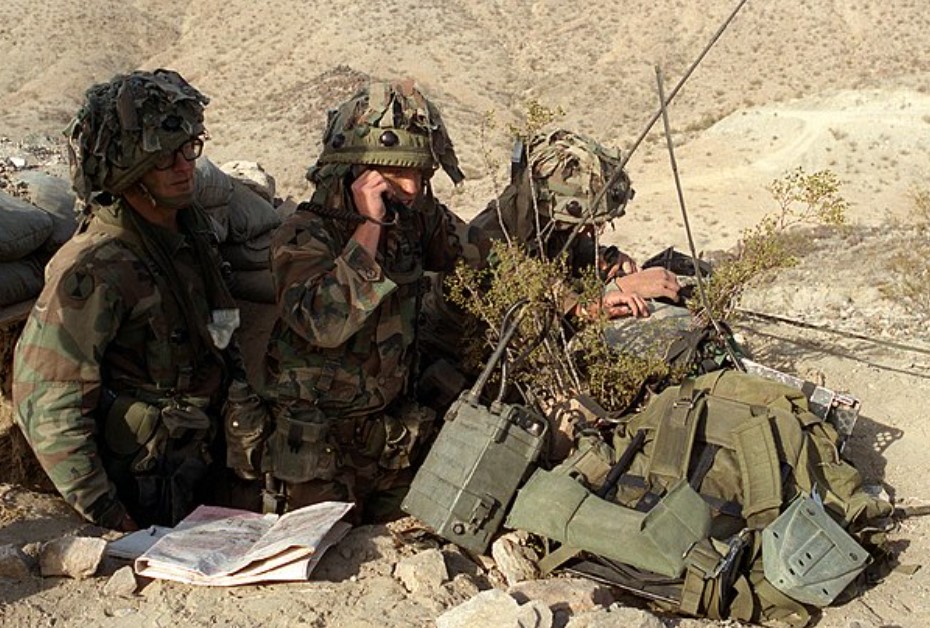U.S. Reopening Pacific Airfields Last Operational 80 Years Ago in WWII
Airfields that once played a crucial yet brief role in America’s military campaign against the Japanese Empire during World War II are now being repurposed for contemporary use.
With the potential for the Pacific region to become a key battleground in future global conflicts, significant efforts are underway to modernize these historic airstrips.
Renovations Underway on Peleliu and Tinian
The airfields on the islands of Peleliu and Tinian, long dormant for decades, are now undergoing significant renovations to accommodate modern military aircraft operations.

Source: Stars and Stripes
France24 reports that these upgrades have progressed rapidly in recent months.
Strategic Shift to Bolster the Pacific Theater
This development is part of a broader strategic shift aimed at bolstering the Pacific theater.

Source: Wikimedia
The focus is on enhancing military readiness and presence in this crucial region.
Announcement and Historical Context
The initiative to refurbish these airstrips was initially announced in April, marking a growing emphasis by the military on the Pacific region.

Source: Museums Victoria/Unsplash
The airfield on Peleliu, originally built by Japanese forces during World War II, is a prime example of historical infrastructure being readied for renewed military use.
World War II Combat on Peleliu
During World War II, Peleliu was held by approximately 10,000 Japanese troops before the American amphibious assault in 1944.

Source: Public Domain/Wikimedia Commons
Task and Purpose reports that around 50,000 American Marines and Army soldiers engaged in fierce combat against these entrenched defenders.
Casualties and Brutality of the Battle
The battle proved to be exceptionally brutal, resulting in significant American casualties.

Source: Wikimedia
Approximately one-third of the American forces were either killed or wounded during this intense confrontation.
Costly Amphibious Assault
The engagement at Peleliu was one of the costliest amphibious assaults in the Pacific theater.

Source: NOAA
The intense combat was captured on film as U.S. forces conducted heavy bombardments and landed troops on the island.
Role of the Peleliu Airfield
The airfield on Peleliu played a vital role by providing crucial air support and serving as a strategic link in the chain of islands used to isolate and constrain the Japanese Empire.

Source: Warfare History
As the war progressed, however, the airfield became increasingly obsolete and was eventually reclaimed by nature.
Triumphant Return of Military Aircraft
On June 22, after months of extensive refurbishment, the U.S. military celebrated a “triumphant return” to Peleliu by successfully landing a C-130 Hercules on the newly resurfaced runway.

Source: Wikimedia
The Marine Corps described this event as a significant milestone, stating, “For the first time since its recertification in June, a military fixed-wing aircraft has touched down on the historic Peleliu airstrip, marking a significant and triumphant return to this iconic World War II site, on June 22, 2024.”
Strategic Importance in the Indo-Pacific Region
The Marine Corps emphasized that making the runway operational was a “critical” component of enhancing the military’s strategic positioning in the Indo-Pacific region.

Source: History
The U.S. Indo-Pacific Command has shared images of the historic airfield’s revival, hinting at the broader strategy behind this development as the Pacific becomes more militarized.
Focus on Tinian and Broader Military Strategy
In addition to Peleliu, the U.S. military is also turning its attention to the nearby island of Tinian. Like Peleliu, Tinian’s small airstrip was last used during World War II and is not yet fully operational.

Source: Brookdale Community College
The refurbishment of these islands is part of a larger effort to bolster America’s military presence in the Pacific, especially in light of the increasing influence of China.
Future Implications and Geopolitical Dynamics
While the islands of Peleliu and Tinian may not be decisive in future conflicts, they provide the American military with enhanced flexibility and operational strength in the Pacific.

Source: Wikimedia
As geopolitical dynamics shift and concerns about China’s rise intensify, the revitalization of these historical airfields underscores the U.S. commitment to maintaining a robust and strategic military presence in the region.
